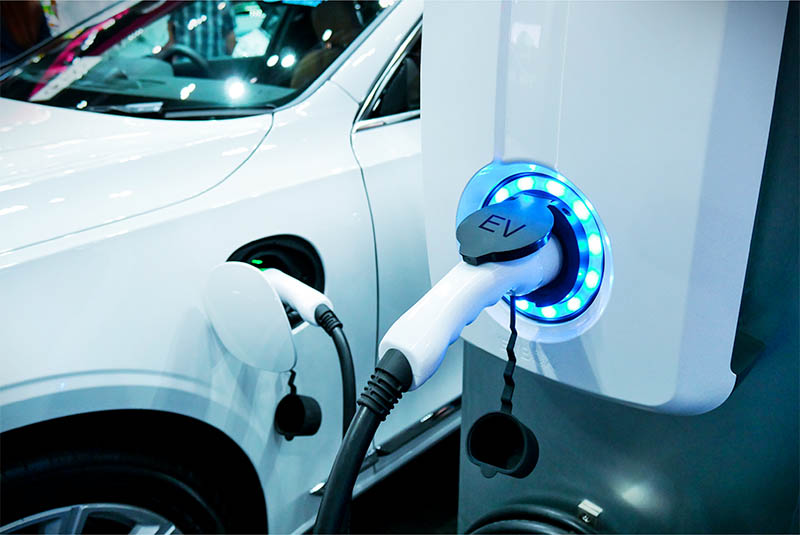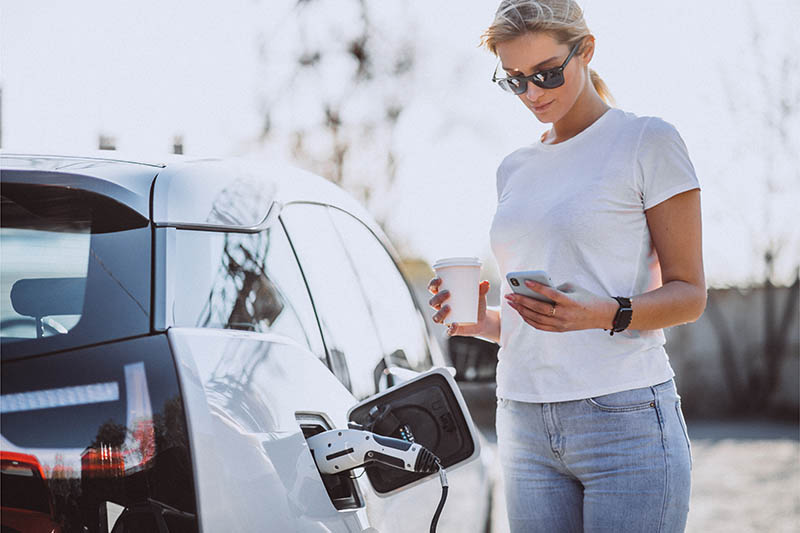Battery Electric Vehicle (BEV) Guide

Where do I charge my electric car?
You have two choices, you can either have a charger installed at your home or use a public charge point. The difference is that the public charging points have higher kilowatts output and therefore will charge your car quicker than a home charger. Generally public charging points are rated at 7kW, 22kW, 50kW 100kW, 150kW & 350kW, whereas home charging units are generally rated at 3.6kW or 7kW. The majority of public charge points are currently rated at either 7kW or 50kW.
The rate at which your car takes the charge is car specific. For example there are no cars available at the moment that will take the charge at 350kW, you need to check the manufacturers specification for the car to establish the maximum charge, although you can generally still connect to the higher rated charging point but you won’t benefit from the higher capacity of the charger.
What is the cost difference between public charging and home charging?
By far the cheaper option will be to charge at home as you can negotiate a lower kWh price with your energy supplier. There are tariffs for EV owners now and often the price can be as low as 5 – 10p per kWh if you charge during the off peak period from midnight to 7:00am. At the other end of the spectrum a charge point at services on a popular stretch of motorway can be as high as 70p per kWh. The main reason for this is the owner of the public charging point needs to make a profit from it and the second important fact is that you pay VAT at 20% on the electricity coming from a public charge point whereas the home charging electricity is taxed at just 5% VAT.
NB: Some car manufacturers have recently started offering deals in partnership with retailers such as supermarkets to offer a lower kWh prices when you shop at their retail outlet and use their chargepoint.

How do I get a home charger installed and do I get any financial assistance?
You will need to select an EV installer from the Electric Vehicle Homecharge Scheme – Authorised Installers list that can be viewed on the gov.uk website: https://www.gov.uk/government/publications/electric-vehicle-homecharge-scheme-authorised-installers. A grant is available provided you qualify, although the main criteria being the car you are ordering qualifies and you haven’t previously claimed, the full criteria can be viewed on the above link.
Your chosen installer will claim the grant towards the cost on your behalf, which is currently £350 and you will pay the difference in cost of the homecharge unit to the installer the cost of which can vary dependent on where you live in the country.
What types of chargepoint connectors are there and do I need my own cable to connect to one?
The public charge points usually have the choice of CHAdeMO, CCS or Type2. The CHADeMO and CCS are designed for high outputs and therefore these types of connectors have their own cable tethered to the charge point, whereas the Type 2 is a socket on the charge point where you can plug in your own cable that quite often will come with the car or can be ordered as an option or even be bought as an accessory from the dealer.
With home charge points these are either tethered or none tethered and they are type 2 connectors. If you don’t pick a tethered cable version you will need to get you cable out of the car and plug it in whereas the tethered option is more convenient with the cable wound around a drum, similar to a hosepipe.
How does vehicle maintenance differ with BEV’s compared to traditional petrol or diesel powered cars?
Although EVs are very complex and the technology is quite advanced they do have less components in the drivetrain that need to be serviced. For example there is no oil that needs the level checking or changing, no clutch to wear out. Having said that the car will still need periodical inspections, in line with usual time frames, such as annually.
The brakes and tyres are still consumable items that will wear out and checks need to be made on their condition on a regular basis. The slight difference with regards to brakes is that EVs can be slowed down with brake regeneration, rather than pressing the brake pedal and that brake pedal directly applying the pressure to the brake pads to slow the car. Regenerative braking is where the electric motor is used as a brake on the drivetrain and the force to slow the car is turned back in to electricity and transferred back in to the battery. This can boost the battery charge level by 10 – 15% on a journey and is more efficient, rather than wasting the energy by heating up and wearing out the brake pads and discs to slow the car down, in the traditional set up.
You can usually select the level of regenerative braking, quite often 3 levels, the highest level will slow the car down the fastest and put more energy back in to the batteries. But as the brakes are potentially used less they can be susceptible to corrosion as would happen if you parked your car up for a few weeks with the brakes not being used. Although quite often the car is programmed to apply the brakes on a regular basis to avoid this situation.










